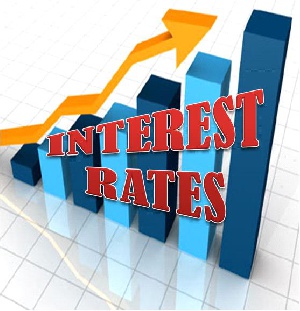Interest rates in Ghana could go up further due to uncertainty regarding price developments, exchange rate volatilities and growth challenges.
As the Monetary Policy Committee (MPC) of the Bank of Ghana (BoG) meets from July 15, analysts are concerned that interest rates could inch up further.
The concerns are critical in the wake of the fact that businesses are grappling with high cost of credit, multiplicity of taxes, high utility tariffs and unreliable power supply.
Additionally, Ghana’s peers in the sub region continue to record positive economic indicators, thus attracting foreign investments into those countries.
While Ghana’s Monetary Policy Rate (MPR) stands at 26 per cent, that of Ivory Coast and Senegal are 3.5 per cent each while Kenya boasts of 10.50 per cent.
Even before the MPC meeting takes off, Ecobank Research is predicting an unchanged policy rate, while investment firm, InvestCorp, believes the policy rate will reach an all-time high of 27.50 percent by the end of December 2016.
Business Finder’s checks in the banking industry indicates that there is some level of illiquidity, basically due to the low money supply.
With its inflation rate of 18.9 percent, Ghana has the highest inflation rate in Africa while Ivory Coast and Senegal have 0.9 and 1.3 per cent respectively.
Kenya’s inflation rate stands at 6.45 per cent.
91-day Treasury bill- one of the benchmark indicators for pricing lending rates is hovering around 22.8 percent, surprisingly lower than the monetary policy rate.
Lending rate is on the average 32 percent, higher from 28.5 percent registered at the end of February this year.
Recap
At the last MPC meetings in May 16, 2016, the Committee maintained the monetary policy rate at 26 percent, given that inflation, though moderating, still remained above the medium-term target band of 8±2 percent.
High frequency data also showed that economic activity was slowly picking up. The update of the BoG’s Composite Index of Economic Activity (CIEA), which is a leading indicator for growth, picked up in the first quarter of 2016, although at a slower pace than a year ago.
The growth outlook according to the Central Bank was generally positive and contingent on sustained improvements in the electricity supply, continued stability in the foreign exchange market, and additional oil and gas production.
In the first quarter of 2016, the trade deficit widened on account of lower export receipts, especially for oil and cocoa as both prices and production volumes declined.
Business News of Friday, 15 July 2016
Source: thefinderonline.com
Interest rates to rise
Entertainment












